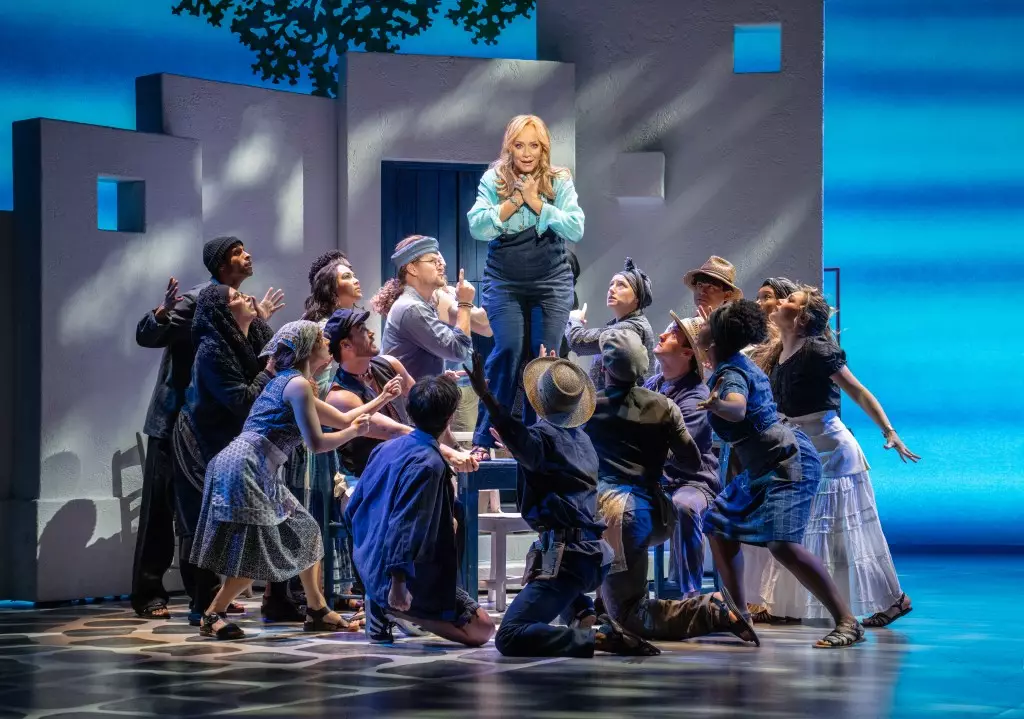Broadway, often heralded as the heart of theatrical innovation, faced a mixed week at the box office, yet amid the fluctuations, the return of *Mamma Mia!* stands out as a beacon of optimism. Its successful preview and immediate sell-out performances at the Winter Garden Theatre highlight a craving for nostalgia and proven crowd-pleasers. This musical revival, marking the ninth-longest-running show in Broadway history, demonstrates that legacy productions still hold immense appeal. Despite the broader industry struggles, *Mamma Mia!* underscores the enduring power of familiarity—and the magnetic pull of ABBA’s timeless hits—which continue to attract audiences eager for joy and escape.
Its swift sell-out success signals that established franchises can still draw large audiences, perhaps even more so in uncertain times. The musical’s opening night on August 14 promises the start of a limited engagement that might serve as a litmus test for other legacy shows aiming for a resilient comeback. As theatre owners and producers navigate a landscape that often feels saturated with volatility, the initial triumph of *Mamma Mia!* exemplifies how well-executed nostalgia can ignite audience enthusiasm. It’s a gamble worth taking, especially given the show’s long-standing history of success and the public’s insatiable appetite for feel-good entertainment.
The Broader Landscape: Struggles, Triumphs, and the Shifts
While *Mamma Mia!* shone as a rare bright spot, the overall week reflected the industry’s ongoing challenges. The majority of shows experienced dips in box office revenue, emblematic of the seasonal slowdown during the city’s sultry dog days of August. Yet, even amidst these dips, several blockbusters demonstrated remarkable resilience. *Hamilton*, *Wicked*, and *The Lion King* continued to fill seats at impressive levels, suggesting that marquee productions with established followings still command loyalty—and the economic muscle—to weather downturns.
Of particular interest is the rising prominence of certain shows, such as *Just In Time*, a Bobby Darin biographical musical starring Jonathan Groff, which boasted the highest ticket prices, averaging over $231. This indicates a segment of theatergoers willing to pay a premium for exclusive or star-driven productions. It also reflects a nascent trend where experiential and star-centric shows may be leading the recovery—though they are outliers in an otherwise cautious market. Meanwhile, lesser-known or newer productions like *Call Me Izzy* and *Gypsy* continue to grapple with attendance figures below full capacity, emphasizing the delicate balance between innovative content and audience familiarity that the industry must navigate.
The financial snapshot reveals an overall drop of around 5% in gross revenue week-over-week, with total weekly earnings hovering just above $30 million. This decline, while disappointing, is not unforeseen; it highlights the vulnerability of Broadway amid fluctuating tourism, economic uncertainties, and changing consumer habits. Still, the cumulative season gross of over $371 million indicates a steady, if cautious, upward trend, suggesting that theater’s core audience remains committed even as the industry evolves.
What These Trends Say About Broadway’s Future
Broadway’s resilience rests not only in its historic productions but also in the industry’s ability to adapt and innovate. The enduring success of long-running classics combined with strategic revivals like *Mamma Mia!* demonstrates that nostalgia remains a powerful commodity. Yet, the fluctuating numbers serve as a sobering reminder that Broadway must continually evolve to draw new audiences and retain its traditional base.
Economic variables, ticket pricing strategies, and marketing efforts will be crucial as producers seek to balance profitability with accessibility. The trend toward star-studded productions commanding higher prices underscores a more segmented market—one where niche experiences and premium offerings coexist with more affordable shows. This dynamic could potentially expand Broadway’s reach if harnessed correctly, but it also raises concerns about affordability and diversity in audiences.
In the end, the industry’s outlook hinges on a willingness to blend tradition with innovation, understanding that while big-name revivals like *Mamma Mia!* can reignite enthusiasm temporarily, long-term sustainability depends on cultivating new stories and engaging broader demographics. For Broadway to thrive in a post-pandemic world, it must strike a delicate balance—celebrating its rich heritage while daring to innovate beyond well-worn paths.
